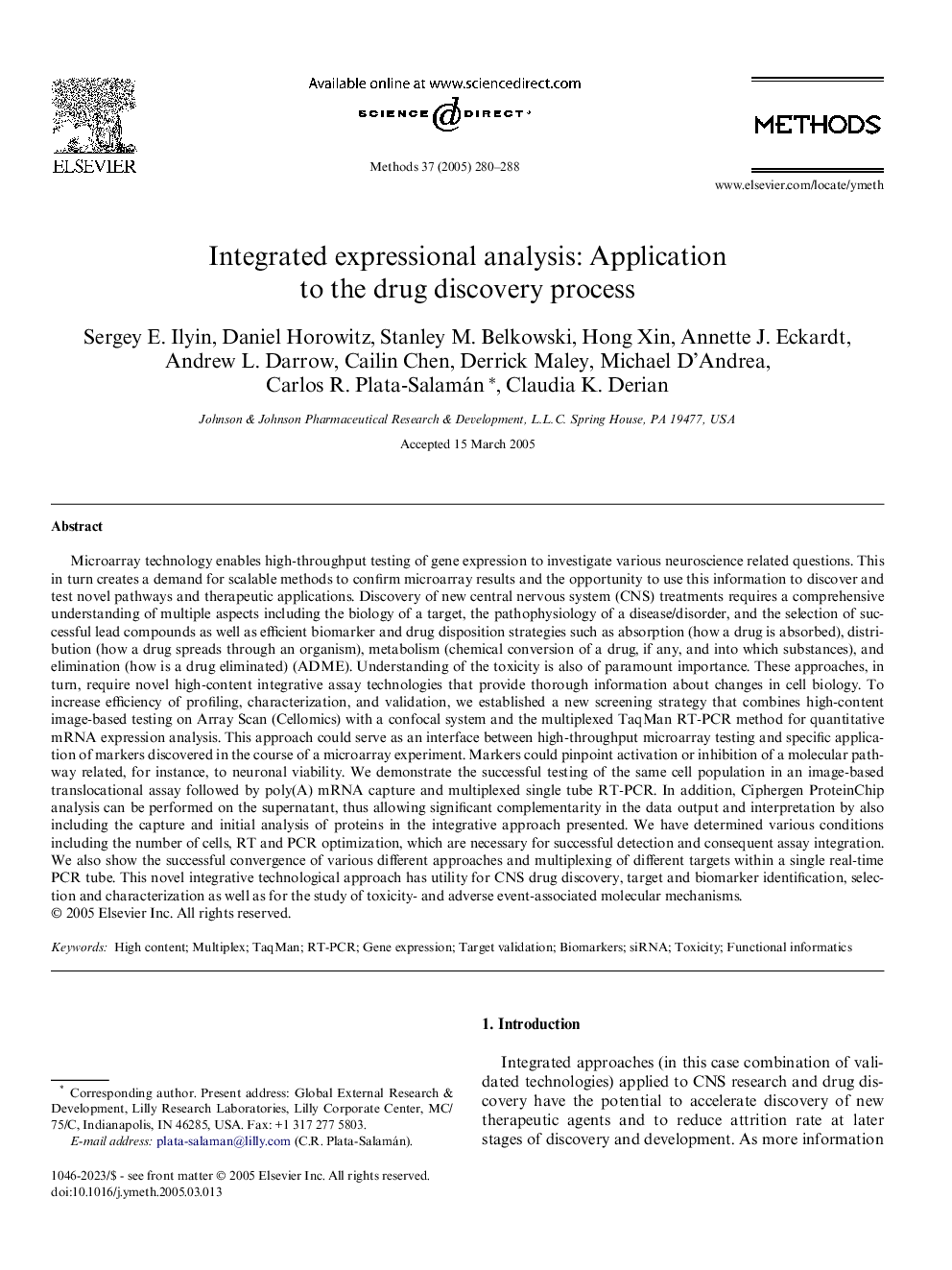| Article ID | Journal | Published Year | Pages | File Type |
|---|---|---|---|---|
| 10826639 | Methods | 2005 | 9 Pages |
Abstract
Microarray technology enables high-throughput testing of gene expression to investigate various neuroscience related questions. This in turn creates a demand for scalable methods to confirm microarray results and the opportunity to use this information to discover and test novel pathways and therapeutic applications. Discovery of new central nervous system (CNS) treatments requires a comprehensive understanding of multiple aspects including the biology of a target, the pathophysiology of a disease/disorder, and the selection of successful lead compounds as well as efficient biomarker and drug disposition strategies such as absorption (how a drug is absorbed), distribution (how a drug spreads through an organism), metabolism (chemical conversion of a drug, if any, and into which substances), and elimination (how is a drug eliminated) (ADME). Understanding of the toxicity is also of paramount importance. These approaches, in turn, require novel high-content integrative assay technologies that provide thorough information about changes in cell biology. To increase efficiency of profiling, characterization, and validation, we established a new screening strategy that combines high-content image-based testing on Array Scan (Cellomics) with a confocal system and the multiplexed TaqMan RT-PCR method for quantitative mRNA expression analysis. This approach could serve as an interface between high-throughput microarray testing and specific application of markers discovered in the course of a microarray experiment. Markers could pinpoint activation or inhibition of a molecular pathway related, for instance, to neuronal viability. We demonstrate the successful testing of the same cell population in an image-based translocational assay followed by poly(A) mRNA capture and multiplexed single tube RT-PCR. In addition, Ciphergen ProteinChip analysis can be performed on the supernatant, thus allowing significant complementarity in the data output and interpretation by also including the capture and initial analysis of proteins in the integrative approach presented. We have determined various conditions including the number of cells, RT and PCR optimization, which are necessary for successful detection and consequent assay integration. We also show the successful convergence of various different approaches and multiplexing of different targets within a single real-time PCR tube. This novel integrative technological approach has utility for CNS drug discovery, target and biomarker identification, selection and characterization as well as for the study of toxicity- and adverse event-associated molecular mechanisms.
Related Topics
Life Sciences
Biochemistry, Genetics and Molecular Biology
Biochemistry
Authors
Sergey E. Ilyin, Daniel Horowitz, Stanley M. Belkowski, Hong Xin, Annette J. Eckardt, Andrew L. Darrow, Cailin Chen, Derrick Maley, Michael D'Andrea, Carlos R. Plata-Salamán, Claudia K. Derian,
